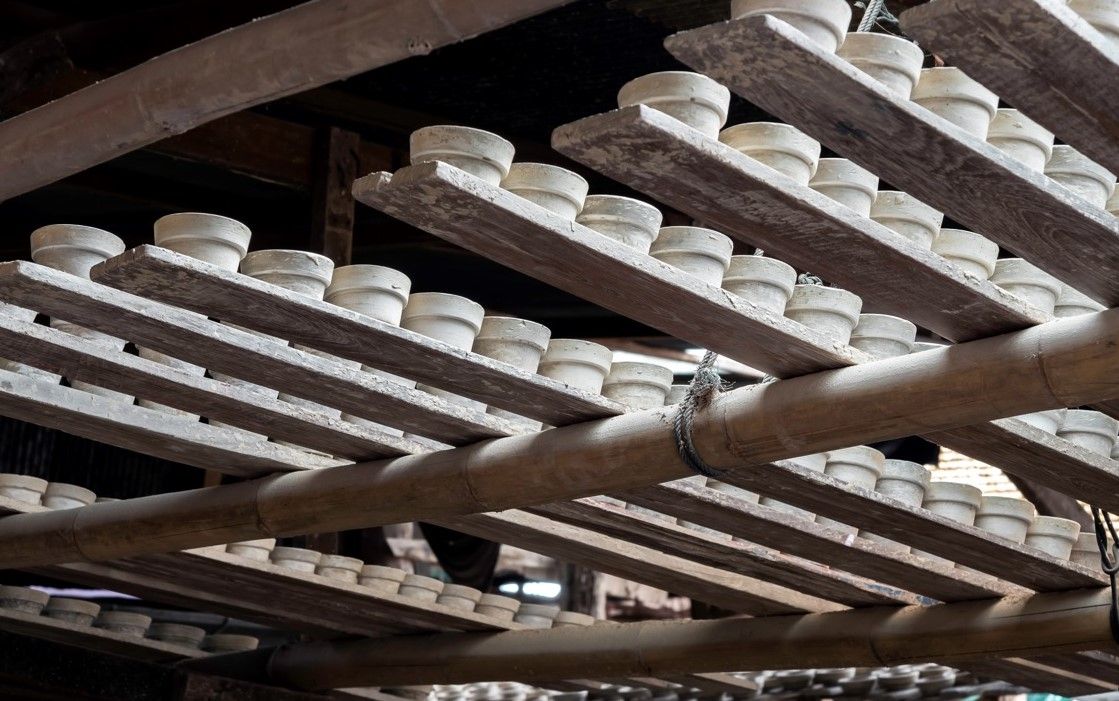The manufacture of ceramics requires more know-how, hard work, and quality raw materials than many people understand.
The average Joe gives little thought into the cup or mug that holds his morning coffee, even though it takes much more than a lump of clay and an oven.
Alongside the skill of design, shaping the product, the application of glazes, and the precision required during firing, is the addition of chemicals throughout the various manufacturing stages to improve the final product.
One of the most worthwhile raw materials in ceramic production is sodium tripolyphosphate.

Also known as STPP, sodium tripolyphosphate is an organic compound which is ideal for decreasing the viscosity of glazes, chelating hard metal ions, and also has an excellent degumming effect in ceramic production. It is typically supplied as a white powder or granular product which must be kept dry in a well-ventilated place, away from extremes of heat and cold.
It can be described more scientifically as, “the sodium salt of the polyphosphate penta-anion, which is the conjugate base of triphosphoric acid, and is produced by heating a stoichiometric mixture of disodium phosphate, Na2HPO4 and monosodium phosphate, under carefully controlled conditions”.

The primary use of STPP in ceramic production is through its ability to lower the viscosity of a mass or slurry and in doing so improve the fluidity of a desired material. This can reduce costs, as any reduction in water content helps to lower energy consumption in a ball mill or spray drying tower (spray column).

However, as well as quicker drying, there are other ways that using sodium tripolyphosphate as an additive in ceramic glazes can improve results in ceramic products. These include:
1. STPP can be used to adjust the density of a glaze slurry to prevent excessive dripping and limit foaming.
2. STPP can be used to change a glaze’s rheological properties to limit the emergence of blowholes, pinholes, bumps, and other defects.
3. STPP can also control thixotropy, and therefore reduce deglazing issues.
4. STPP can help to ensure an even application of a glaze, and so limit the formation of unwanted stripes or patches.
5. STPP can be especially beneficial when forming high-quality marble patterns on ceramics, as an additional application on the sieve (wire mesh) can prevent a pattern from blurring after glazing.
6. STPP can improve the efficiency of glaze application, speed up glaze application, and therefore, lower production costs.
Additionally, in some circumstances, it can also be employed as a low-cost plasticizer.
Industrial ceramic producers are all too aware of the importance of rheology, setting times, and glaze efficiency, whether it is for the manufacture of crockery, sanitary products, tiling, or an individual industrial product, such as the insulators on power cables and pylons.
Modern standards and increased expectation on a ceramic’s performance mean that any defect on a glaze can make a product unsellable.

It is therefore essential that extra care be taken when selecting raw materials for use in the ceramics industry.
AG CHEMI GROUP (who sponsor this website) has been supplying industrial ingredients, such as STPP, to manufacturers all over the world for the past 27 years. Allowing business, such as Luxury Table, to produce goods to meet the highest standards.
Overall, sodium tripolyphosphate (STPP) is an excellent dispersing agent for use in industrial ceramic production. It is an incredibly versatile product with uses in detergents and soaps, in leather, battery, and paper production, as well as being employed in as a food preservative. But STPP will always have a practical use as an additive for glazes in the production of ceramics.
To find out more about STPP and its advantages for ceramic production visit AG CHEMI GROUP, call info@agchemigroup.eu or contact Timor on +420 777 227 387.
Photo credit: Luxury table, Markus Spiske, Freepik, AG CHEMI GROUP, & Freepik